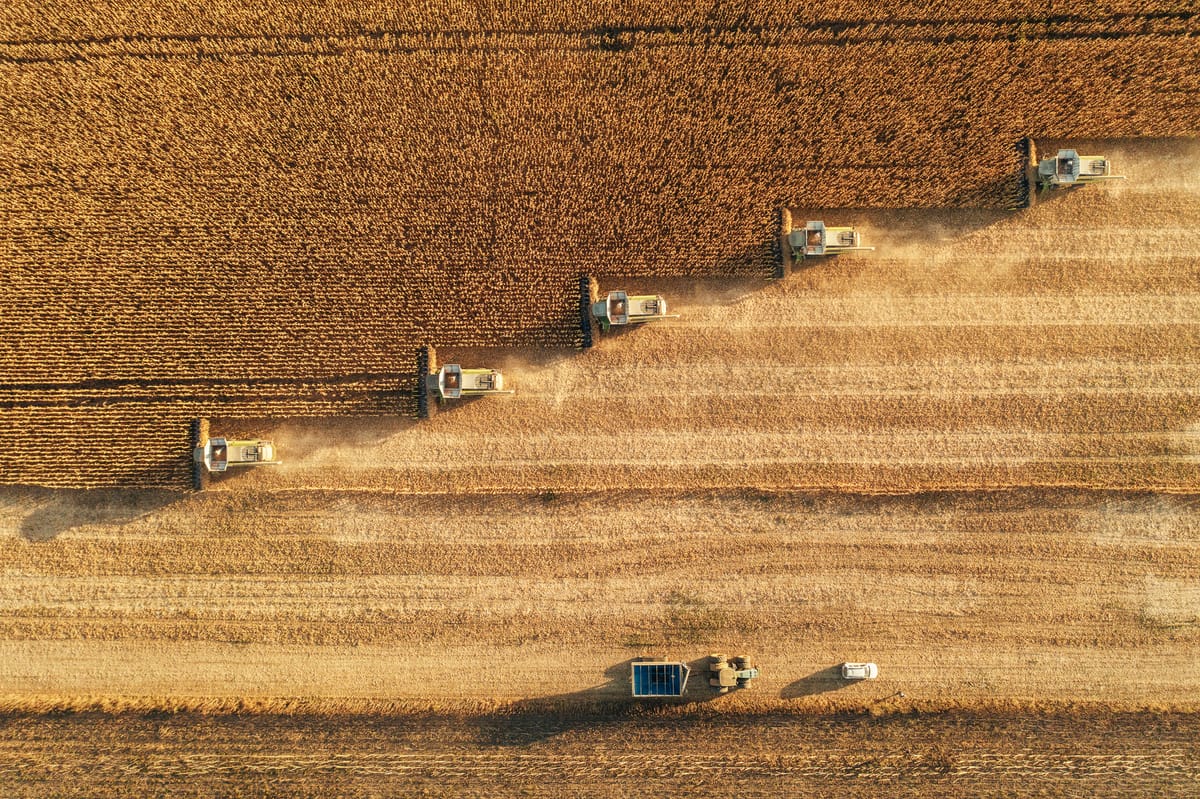Precision Farming for Global Food Security. AI and the Fourth Agricultural Revolution
AI in precision agriculture can revolutionize global food systems, but its full potential will only be realized if access, infrastructure, and governance keep pace with technological advances.

AI-driven precision agriculture is transforming farming into a proactive, data-driven system that boosts productivity, efficiency, and sustainability.
Uneven global adoption risks widening inequality, with smallholder farmers often lacking access to the technology and infrastructure needed to benefit.
Inclusive policies and equitable access are essential to ensure AI strengthens global food security while protecting ecosystems and rural livelihoods.
Artificial Intelligence (AI) is poised to redefine global agriculture, marking what many describe as the Fourth Agricultural Revolution. Unlike earlier waves of transformation—mechanization, the Green Revolution, and biotechnology—this revolution focuses on precision, efficiency, and sustainability. AI, embedded within precision agriculture systems, offers the potential to vastly increase productivity while preserving resources and building resilience against climate and market shocks.
Precision agriculture relies on high-resolution, field-level data collected from satellites, sensors, drones, and cameras. AI systems process this information to guide micro-level decisions, adjusting inputs such as water, nutrients, and labor in response to changing conditions. By turning vast datasets into actionable recommendations, AI transforms farming from a reactive process into a proactive, adaptive enterprise.
Defining Precision Agriculture in the AI Era
In its most advanced form, precision agriculture integrates predictive analytics, computer vision, and autonomous machinery to optimize every step of the cultivation cycle. Soil moisture levels, crop growth rates, pest infestations, and weather forecasts can be monitored and modeled in real time. This granular insight allows farmers to direct resources only where and when they are needed, reducing waste and maximizing yield.
Rather than operating on broad averages—treating entire fields as uniform—AI enables plant-by-plant and soil-patch-by-soil-patch management. The result is higher productivity, improved quality, and reduced environmental impact.
Current Global Landscape
In technologically advanced agricultural economies, AI-driven precision systems are already helping farmers integrate live sensor feeds with weather and market data to make optimal decisions. In some cases, autonomous tractors, drones, and irrigation systems respond instantly to AI recommendations, creating a self-adjusting “farm operating system.”
Globally, however, adoption is uneven. The majority of the world’s farms are smallholdings under two hectares, which collectively produce a significant share of global food but often lack access to advanced tools. Mobile-based AI advisory services, chatbot interfaces, and affordable sensor kits are emerging as promising solutions to close this gap.
Innovations such as AI-powered crop advisory chatbots and digital twin farm modeling—which simulates farm conditions based on minimal input data—are making precision agriculture more accessible to farmers in low-resource settings. These tools allow real-time decision-making even in areas with limited infrastructure.
Opportunities and Benefits
AI-enabled precision agriculture has the potential to deliver a combination of productivity gains, cost savings, and environmental benefits:
- Higher Yields and Profitability – Optimizing input use boosts output while lowering production costs.
- Lower Consumer Prices – Efficiency gains can stabilize supply and reduce market volatility.
- Greater Resilience – AI supports rapid responses to pests, diseases, extreme weather, and shifting market demands.
- Environmental Sustainability – Precision input application minimizes overuse of water, fertilizer, and pesticides, reducing soil degradation and pollution.
The integration of AI also opens new possibilities for climate-smart agriculture, aligning productivity improvements with carbon footprint reduction.
Challenges and Risks
Realizing AI’s benefits will require overcoming several significant challenges:
- Bias and Transparency – AI recommendations are only as reliable as the data they are trained on. Poor-quality or non-representative datasets can produce biased or inaccurate advice.
- Data Governance – Sensitive agricultural, environmental, and socioeconomic data must be protected, with clear rules for ownership and use.
- Infrastructure Gaps – In many rural regions, unreliable connectivity, limited electricity, and lack of devices restrict AI adoption.
- Trust and Accountability – Farmers need transparent, explainable AI outputs and mechanisms to correct errors that could lead to costly mistakes.
Without deliberate policies, these barriers could widen inequalities, leaving the most vulnerable farmers behind.
Societal and Food Security Implications
Feeding a global population projected to reach 10 billion by 2050 will require a step-change in productivity without exacerbating environmental pressures. AI-powered precision agriculture could be central to this effort, enabling more food to be produced on existing farmland, reducing waste, and supporting adaptive responses to climate change.
Improved yields and resource efficiency can strengthen both local and global food security—but technology alone is not enough. The benefits must be matched by investments in infrastructure, distribution networks, farmer training, and market access. Otherwise, yield gains risk being concentrated among wealthier producers, leaving systemic vulnerabilities unaddressed.
Policy and Strategy Considerations
For AI in precision agriculture to deliver inclusive benefits, governments, industry, and civil society will need to align on enabling conditions:
- Farmer-Centric Technology Development – Ensure solutions are tailored to local needs, languages, and crop systems.
- Interoperability Standards – Promote open data formats and integration between tools to prevent lock-in to proprietary platforms.
- Capacity Building – Provide training and digital literacy programs to empower farmers to use and interpret AI outputs effectively.
- Public-Private Partnerships – Combine state resources with private sector innovation to scale access, especially for smallholder farmers.
- Incentives for Sustainable Practices – Reward practices that enhance environmental outcomes alongside productivity gains.
Outlook
AI’s role in precision agriculture is set to expand rapidly, driven by advances in machine learning, computer vision, robotics, and remote sensing. In the coming decade, integration with autonomous systems, quantum-enhanced analytics, and climate modeling could push efficiency and predictive accuracy to new heights.
The greatest opportunity lies in pairing these technological advances with inclusive design and equitable access. By ensuring that smallholder farmers and marginalized regions can benefit, AI-powered precision agriculture could become a cornerstone of sustainable, resilient, and fair global food systems.
If deployed wisely, this Fourth Agricultural Revolution will not only boost productivity but also protect ecosystems, strengthen rural livelihoods, and contribute meaningfully to global food security.



